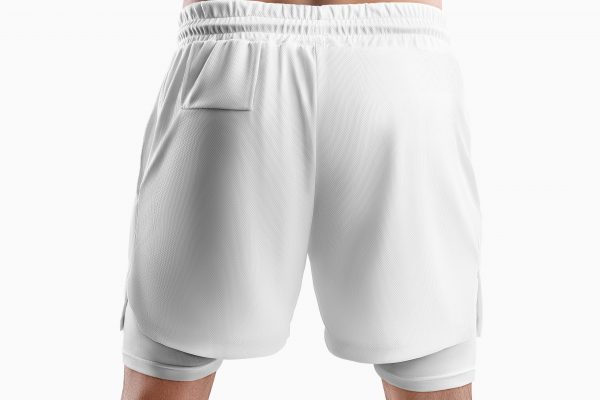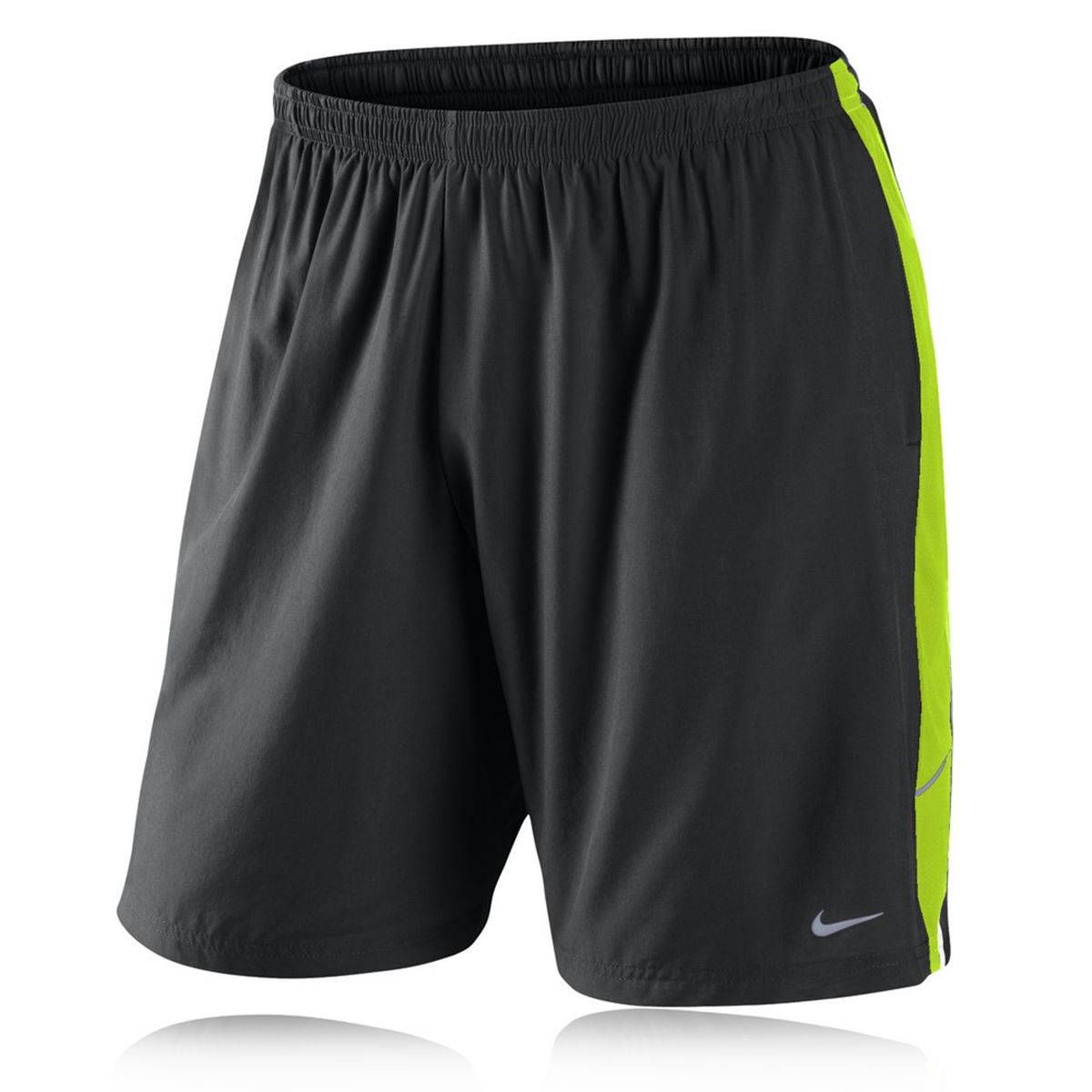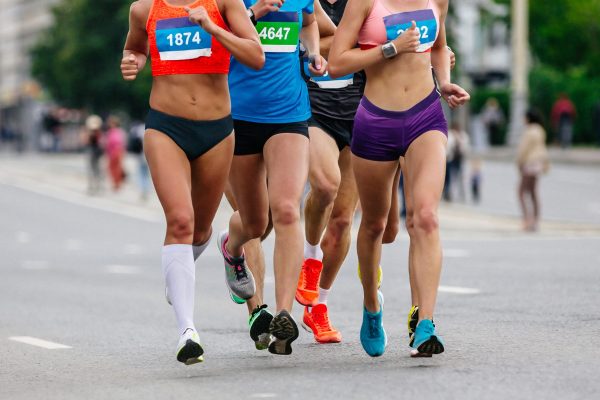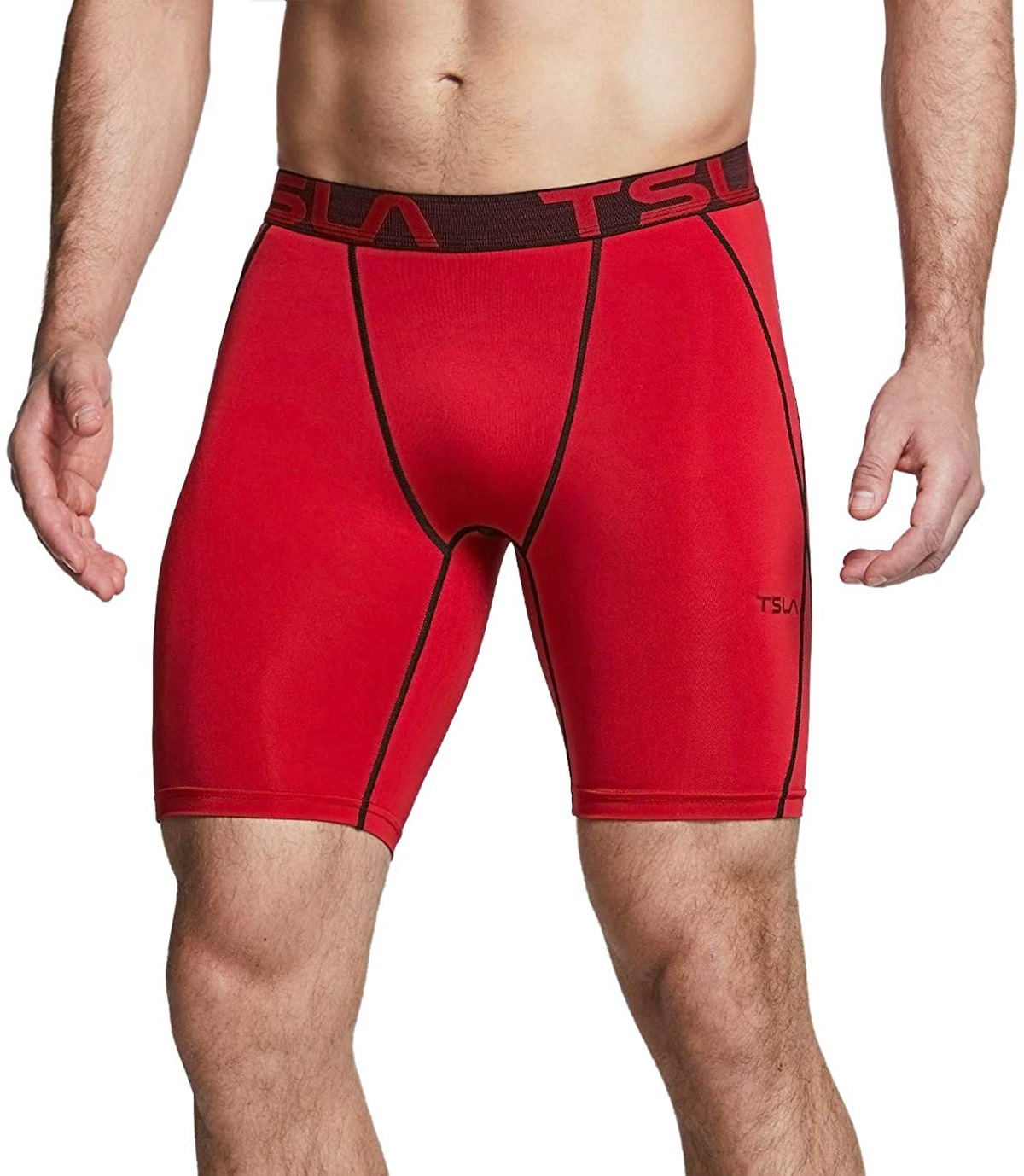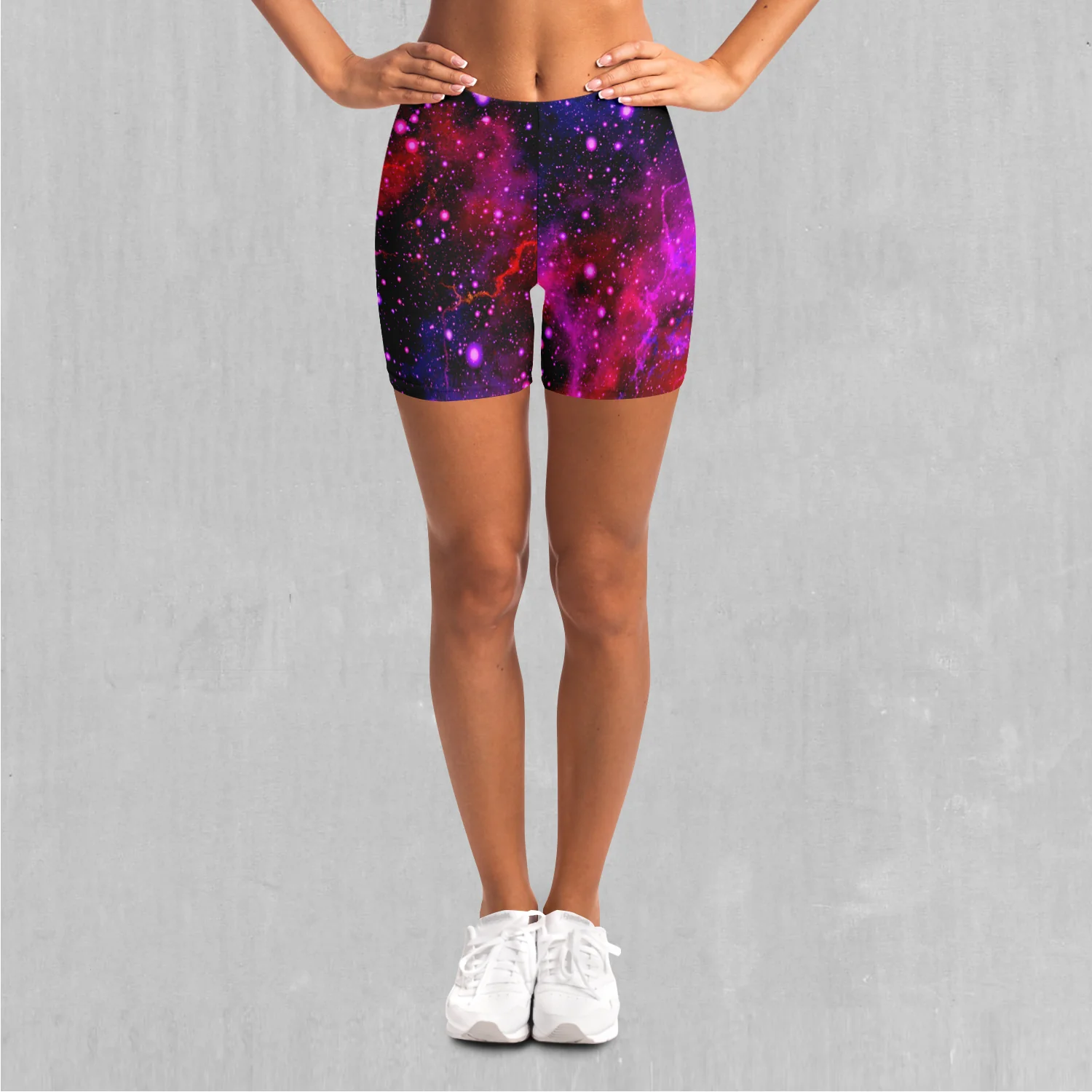Home>Misc>Featured>Why Does My Face Turn Red When I Exercise
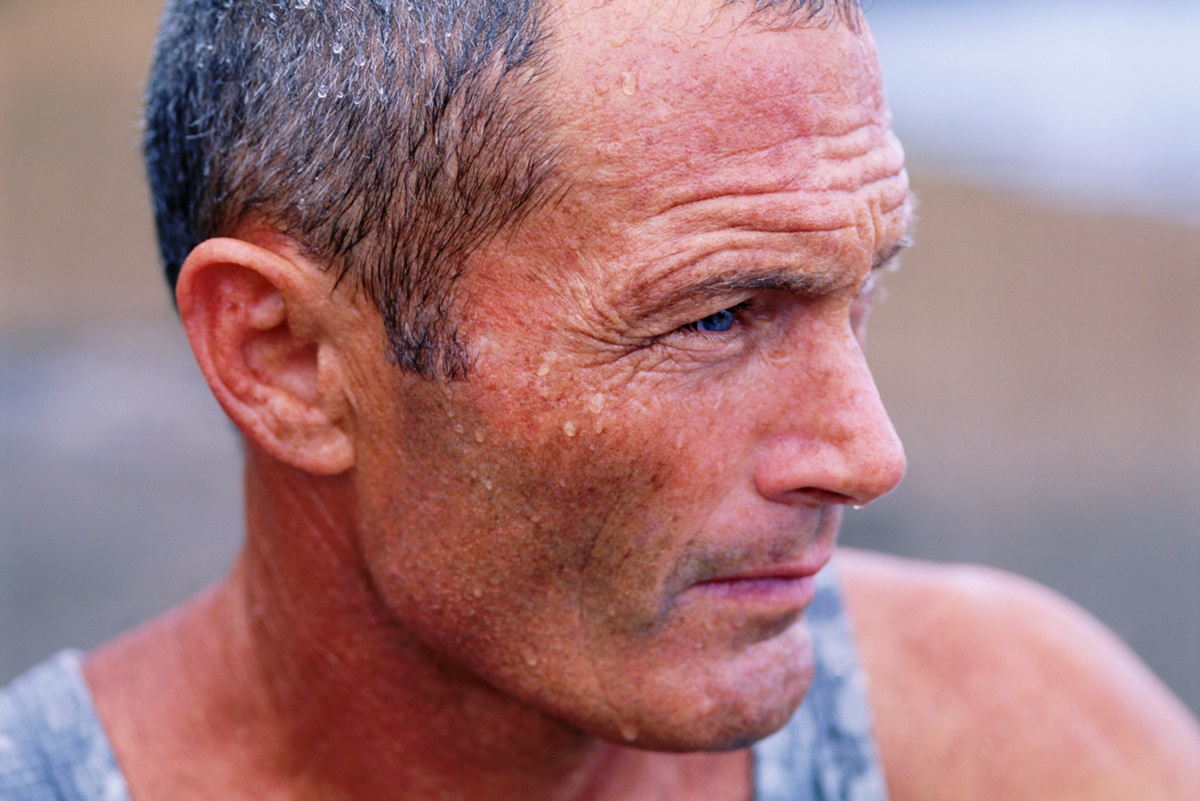

Featured
Why Does My Face Turn Red When I Exercise
Published: September 27, 2023
Discover why your face turns red when you exercise and learn how to manage it effectively. Get featured tips and insights on this common physiological reaction.
Introduction
Have you ever wondered why your face turns red when you exercise? It’s a common phenomenon that many people experience, but understanding the underlying reasons behind it can shed some light on how our bodies function during physical activity.
The physiological changes that occur during exercise can lead to facial redness, and it’s important to understand the factors that contribute to this phenomenon. In this article, we will explore the reasons why your face may turn red when you exercise and discuss some strategies to help control it.
Blushing, or the reddening of the face, is often associated with emotions such as embarrassment or anger. However, during exercise, facial redness is a different physiological response caused by various factors. While it may be alarming for some individuals, it is generally considered a normal and temporary reaction to physical exertion.
Understanding the physiology behind blushing can provide us with insights into why our faces turn red during exercise. When we engage in physical activity, several physiological changes occur within our bodies, including increased blood flow, activation of the sympathetic nervous system, and the release of adrenaline and cortisol.
These changes work together to support the body’s energy demands during exercise. However, they also have an impact on the blood vessels in the face, leading to facial redness. Let’s dive deeper into the specific factors contributing to this phenomenon.
Understanding the Physiology of Blushing
Blushing, or the reddening of the face, is a natural response that occurs when the blood vessels near the surface of the skin dilate. This dilation leads to an increase in blood flow to the face, resulting in a flushed appearance. While blushing is commonly associated with emotional responses such as embarrassment or shyness, it can also occur during physical activities like exercise.
During exercise, multiple physiological factors come into play that contribute to facial redness. One of the primary factors is increased blood flow to the skin. When we engage in physical activity, our bodies require more oxygen and nutrients to fuel the muscles. To meet this demand, the heart pumps more blood, which results in increased blood flow throughout the body, including the face.
In addition to increased blood flow, the sympathetic nervous system also plays a role in facial redness during exercise. The sympathetic nervous system is responsible for regulating various bodily functions, including the dilation of blood vessels. When we exercise, the sympathetic nervous system is activated, leading to the dilation of blood vessels in the face, which contributes to the flushed appearance.
Furthermore, the release of hormones like adrenaline and cortisol during exercise can also contribute to facial redness. Adrenaline, also known as the “fight or flight” hormone, is released in response to physical exertion. It causes the blood vessels to dilate and increases blood flow to the muscles to enhance performance. This dilation can also extend to the blood vessels in the face, resulting in facial redness.
Cortisol, another hormone released during exercise, is involved in the body’s stress response. It has vasodilatory effects, meaning it can widen the blood vessels, including those in the face. This can contribute to facial redness as well.
Overall, the physiology of blushing during exercise involves increased blood flow, activation of the sympathetic nervous system, and the release of hormones like adrenaline and cortisol. These factors work together to support the body’s energy needs during physical activity but can also lead to facial redness as a temporary side effect.
Now that we have a better understanding of the physiological mechanisms behind facial redness during exercise, let’s explore some of the specific factors that contribute to this phenomenon.
Factors contributing to facial redness during exercise
Facial redness during exercise can be influenced by various factors. Understanding these factors can help us gain further insight into why our faces turn red when we engage in physical activity. Let’s explore some of the key contributors to facial redness during exercise.
Increased blood flow and vasodilation: When we exercise, our muscles require more oxygen and nutrients to perform optimally. This increased demand for blood flow leads to vasodilation, which is the widening of blood vessels to accommodate the increased blood flow. This dilation affects the blood vessels in the face, resulting in a flushed appearance.
Activation of the sympathetic nervous system: The sympathetic nervous system plays a crucial role in regulating various bodily functions, including the dilation of blood vessels. During exercise, the sympathetic nervous system is activated to support increased physical exertion. This activation can lead to the dilation of blood vessels in the face, contributing to facial redness.
Release of adrenaline and cortisol: Adrenaline, also known as epinephrine, is a hormone released during exercise that helps increase heart rate, blood flow, and oxygen delivery to the muscles. Adrenaline causes blood vessels to dilate, including those in the face, resulting in facial redness. Similarly, cortisol, a stress hormone, can also cause vasodilation, further contributing to facial redness during exercise.
Temperature regulation and heat dissipation: When we exercise, our bodies generate heat. To cool down and maintain an optimal body temperature, our blood vessels dilate, allowing for increased blood flow and heat dissipation. This heat dissipation process can also contribute to facial redness as more blood is directed towards the skin’s surface.
Intensity and duration of exercise: The intensity and duration of exercise can also impact facial redness. Higher intensity workouts or prolonged periods of physical exertion can lead to increased blood flow and vasodilation, resulting in more pronounced facial redness.
Individual differences: It’s important to note that the degree of facial redness during exercise can vary among individuals. Factors such as genetics, skin tone, and overall cardiovascular health can influence the extent of facial redness experienced during physical activity.
Overall, facial redness during exercise is influenced by increased blood flow and vasodilation, activation of the sympathetic nervous system, release of hormones like adrenaline and cortisol, as well as temperature regulation and individual differences. By understanding these contributing factors, we can explore strategies to help control facial redness during exercise.
Increased blood flow and vasodilation
One of the key factors contributing to facial redness during exercise is increased blood flow and vasodilation. When we engage in physical activity, our muscles require more oxygen and nutrients to perform at their best. To meet this demand, the body increases blood flow to the working muscles. This increased blood flow is achieved through the dilation or widening of blood vessels, a process called vasodilation.
The dilation of blood vessels not only occurs in the muscles but also extends to the blood vessels in the face. When blood vessels in the face widen, more blood is directed to the surface of the skin, resulting in visible facial redness.
The increase in blood flow and vasodilation during exercise serves several purposes. Firstly, it allows for efficient delivery of oxygen and nutrients to the muscles, enabling them to generate energy for movement. Secondly, it facilitates the removal of metabolic waste products, such as carbon dioxide and lactic acid, from the muscles.
Additionally, the increase in blood flow and vasodilation helps regulate body temperature during exercise. As the body heats up during physical activity, blood vessels near the surface of the skin dilate to dissipate heat. This process, known as heat dissipation, allows excess heat to be released from the body and helps prevent overheating.
While increased blood flow and vasodilation are vital for optimal performance and temperature regulation during exercise, they can also lead to facial redness. The extent of facial redness may vary among individuals and can be influenced by factors such as overall cardiovascular health, genetics, and skin tone.
It’s important to remember that facial redness during exercise is typically a temporary reaction and should not cause alarm. However, for some individuals who are self-conscious or experience excessive redness, there are strategies that can help control facial redness during exercise. These strategies focus on maintaining optimal blood flow and temperature regulation without compromising performance.
In the following sections, we will explore some of these strategies, including staying hydrated, using cooling techniques, wearing breathable clothing, and implementing a gradual warm-up and cool-down routine. By incorporating these practices, individuals can manage facial redness during exercise and have a more comfortable and enjoyable workout experience.
Activation of the sympathetic nervous system
Another factor contributing to facial redness during exercise is the activation of the sympathetic nervous system. The sympathetic nervous system is responsible for regulating various bodily functions, including the dilation of blood vessels.
During exercise, the sympathetic nervous system kicks into action to support increased physical exertion. This activation leads to the dilation or widening of blood vessels throughout the body, including those in the face. The dilation of blood vessels in the face allows for increased blood flow, which can result in visible facial redness.
The sympathetic nervous system response during exercise is part of the body’s natural physiological mechanisms. It prepares the body for physical activity by increasing heart rate, blood pressure, and oxygen delivery to the working muscles. This response ensures that the muscles receive the necessary energy and nutrients to perform optimally during exercise.
While the activation of the sympathetic nervous system is essential for supporting physical performance, it can also cause facial redness as a side effect. The extent of facial redness experienced may vary among individuals and can be influenced by factors such as overall cardiovascular health and the body’s specific response to exercise.
It’s important to note that facial redness resulting from sympathetic nervous system activation during exercise is a temporary reaction and should not be a cause for concern. However, there are strategies that can help individuals manage facial redness and feel more comfortable during their workouts.
In the following sections, we will explore some of these strategies, including staying hydrated, using cooling techniques, wearing breathable clothing, and implementing a gradual warm-up and cool-down routine. These strategies can help individuals regulate blood flow and temperature during exercise, minimizing the intensity of facial redness.
By understanding the role of the sympathetic nervous system and implementing these strategies, individuals can enjoy their workouts without excessive facial redness and focus on achieving their fitness goals.
Release of adrenaline and cortisol
The release of hormones, such as adrenaline and cortisol, during exercise can also contribute to facial redness. Adrenaline, also known as epinephrine, is a hormone released by the adrenal glands in response to physical exertion or stress. It plays a vital role in the body’s “fight or flight” response.
When we exercise, adrenaline is released into the bloodstream, leading to several physiological effects. Adrenaline causes blood vessels to dilate, including those in the face. This dilation allows for increased blood flow to the working muscles and helps support their energy demands during physical activity.
However, the dilation of blood vessels in the face as a result of adrenaline release can also contribute to facial redness. The extent of facial redness may vary among individuals and can be influenced by factors such as the intensity and duration of the exercise, as well as individual cardiovascular health and skin tone.
Another hormone released during exercise is cortisol. Cortisol is a stress hormone that is involved in the body’s response to physical and psychological stress. During exercise, cortisol is released to help mobilize energy reserves and maintain blood sugar levels.
Similar to adrenaline, cortisol also has vasodilatory effects. It can cause the blood vessels, including those in the face, to dilate. This dilation can contribute to facial redness experienced during and after exercise.
It’s important to note that the release of adrenaline and cortisol during exercise is a natural response and part of the body’s adaptive mechanisms. These hormones play important roles in supporting overall performance and energy regulation during physical activity.
While facial redness resulting from the release of adrenaline and cortisol is generally temporary and harmless, some individuals may feel self-conscious or uncomfortable with the intensity of redness. In the following sections, we will discuss strategies to help manage facial redness during exercise, including staying hydrated, using cooling techniques, wearing breathable clothing, and implementing a gradual warm-up and cool-down routine.
By implementing these strategies, individuals can minimize the intensity of facial redness and feel more confident and comfortable during their workouts.
Temperature regulation and heat dissipation
Temperature regulation and heat dissipation are crucial processes that occur during exercise to maintain the body’s optimal temperature. When we engage in physical activity, our bodies generate heat as a byproduct of muscle contraction and energy production.
To prevent overheating, the body relies on various mechanisms to regulate temperature, including the dilation of blood vessels. When the body heats up, the blood vessels near the skin’s surface dilate, allowing for increased blood flow and heat dissipation.
This process of vasodilation, or the widening of blood vessels, not only helps cool down the body but also contributes to facial redness during exercise. As the blood vessels in the face dilate, more blood is directed towards the skin’s surface, resulting in visible facial redness.
Temperature regulation and heat dissipation are essential for maintaining the body’s internal temperature within a narrow and optimal range. This process allows the body to continue performing physical activity without the risk of overheating or heat-related illnesses.
The degree of facial redness experienced during exercise due to temperature regulation may vary among individuals. Factors such as overall cardiovascular health, genetics, and the intensity and duration of exercise can influence the extent of facial redness.
It’s important to note that facial redness resulting from temperature regulation and heat dissipation is a natural and temporary response. However, for individuals who are self-conscious about the intensity of facial redness, there are strategies to help manage and minimize its effects.
In the following sections, we will discuss some of these strategies, including staying hydrated, using cooling techniques, wearing breathable clothing, and implementing a gradual warm-up and cool-down routine. By incorporating these practices, individuals can better regulate their body temperature, minimize facial redness, and have a more comfortable and enjoyable exercise experience.
How to control facial redness during exercise
If you experience excessive facial redness during exercise and find it uncomfortable or self-conscious, there are strategies you can implement to help control and minimize its effects. These strategies focus on maintaining optimal blood flow and temperature regulation without compromising your performance or workout experience. Here are some tips:
- Stay hydrated: Proper hydration is essential for regulating body temperature. Make sure to drink plenty of water before, during, and after your workout to support optimal blood flow and temperature control.
- Use cooling techniques: Incorporate cooling techniques into your exercise routine to help reduce facial redness. For example, you can apply a cold towel to your face or use a handheld fan to provide a cooling sensation and promote vasoconstriction.
- Wear breathable clothing: Choose workout clothing made from breathable fabrics that allow for proper ventilation and heat dissipation. Avoid wearing tight or restrictive clothing that may impede blood flow and contribute to facial redness.
- Implement a gradual warm-up and cool-down: Start your exercise session with a gradual warm-up to prepare your body for physical activity. This can help minimize the sudden onset of facial redness. Similarly, end your workout with a proper cool-down routine, including gentle stretching, to allow your body to gradually return to its resting state.
- Consider using skincare products: Some individuals find relief from facial redness by using skincare products formulated to reduce redness and inflammation. Look for products containing ingredients like green tea extract or aloe vera that have soothing and calming properties.
- Consult a healthcare professional: If facial redness during exercise is persistent, severe, or accompanied by other concerning symptoms, it’s worth consulting a healthcare professional. They can evaluate your specific situation and provide personalized advice or medical interventions if necessary.
Remember, facial redness during exercise is a common and temporary response, and it may vary among individuals. While these strategies can help control and minimize facial redness, it’s important to focus on overall health, performance, and enjoyment of your workouts rather than solely on its visible effects. Listen to your body, pay attention to any discomfort, and make adjustments as needed to ensure a safe and satisfying exercise experience.
Staying hydrated
One of the key strategies to control facial redness during exercise is to stay properly hydrated. Hydration plays a crucial role in regulating body temperature and supporting optimal blood circulation, both of which can help minimize facial redness. When you are adequately hydrated, your body is better equipped to cool down efficiently and maintain optimal blood flow to the face.
During exercise, your body loses water through sweat, and if you don’t replenish those fluids, it can lead to dehydration. Dehydration can impair your body’s ability to regulate temperature, potentially exacerbating facial redness. Therefore, it is important to drink enough fluids before, during, and after your workout to maintain proper hydration.
As a general guideline, aim to drink at least 8 glasses (64 ounces) of water per day, and additional fluids during exercise to compensate for the fluid loss. However, fluid needs vary depending on factors such as intensity and duration of exercise, environmental conditions, and individual sweat rates. It is essential to listen to your body’s signals and drink when you feel thirsty.
Opting for hydrating beverages such as water, sports drinks, or electrolyte-rich fluids can help replenish not only water but also essential electrolytes like sodium, potassium, and magnesium, which are lost through sweat. These electrolytes aid in regulating fluid balance and muscle function.
In addition to hydration, consuming hydrating foods can also contribute to water intake. Fruits and vegetables with high water content, such as watermelon, cucumber, strawberries, and leafy greens, can help hydrate your body and support overall hydration levels.
Remember that staying hydrated is not only important for controlling facial redness during exercise but also for your overall health and performance. Dehydration can lead to fatigue, decreased exercise performance, and other potential health risks. By keeping your body well-hydrated, you can support proper blood circulation, temperature regulation, and minimize facial redness during exercise.
Be mindful of your body’s hydration needs, and establish a routine of regularly drinking fluids throughout the day, especially before, during, and after your workouts. By prioritizing hydration, you can optimize your exercise experience and keep facial redness at a comfortable level.
Using cooling techniques
Using cooling techniques during exercise can be an effective way to control and minimize facial redness. These techniques work by providing a cooling sensation and promoting vasoconstriction, which can help regulate blood flow and reduce the intensity of facial redness. Here are some cooling techniques you can implement:
- Cold towel: Place a cold towel on your forehead, neck, or other areas of your face during exercise. The cold sensation can help cool down your body and constrict the blood vessels, reducing facial redness.
- Ice pack or cold compress: Apply an ice pack or a cold compress to specific areas of your face, such as your cheeks or forehead. The cold temperature can help constrict the blood vessels and provide relief from facial redness.
- Handheld fan: Use a handheld fan to create a cooling breeze on your face. The gentle airflow can help evaporate sweat and cool down your skin, reducing facial redness.
- Misting spray: Carry a small misting spray bottle filled with water and lightly spritz your face during exercise. The water droplets evaporating on your skin can have a cooling effect and help regulate blood flow.
- Cooling towel or bandana: Use a cooling towel or bandana that is designed to retain moisture and remain cool during exercise. Wrap it around your neck or place it on your forehead to lower your body temperature and alleviate facial redness.
- Stay in a shaded area: If possible, exercise in shaded areas to avoid direct sunlight and reduce the potential for overheating. By staying in a cooler environment, you can help regulate your body temperature and minimize facial redness.
These cooling techniques can be especially beneficial during hot and humid weather conditions or high-intensity workouts. Experiment with different methods and find which cooling technique works best for you.
Keep in mind that while cooling techniques can help control facial redness, they may provide temporary relief and may not completely eliminate redness for everyone. They should be used in conjunction with other strategies such as staying hydrated and wearing breathable clothing for optimal results.
By incorporating cooling techniques into your exercise routine, you can help manage facial redness and feel more comfortable during your workouts. Remember to listen to your body’s signals and make adjustments as needed to maintain a safe and enjoyable exercise experience.
Wearing breathable clothing
The choice of clothing can have a significant impact on facial redness during exercise. Opting for breathable clothing is a key strategy to help regulate body temperature, manage sweat, and minimize facial redness. Breathable fabrics allow air circulation and promote moisture-wicking, keeping you more comfortable during physical activity. Here are some tips for wearing breathable clothing:
- Choose moisture-wicking materials: Look for workout apparel made from moisture-wicking fabrics, such as polyester or nylon blends. These materials pull sweat away from your skin and allow it to evaporate quickly, helping to regulate body temperature and reduce the intensity of facial redness.
- Avoid tight or restrictive clothing: Tight or restrictive clothing can impede blood flow and limit air circulation. Opt for clothing with a looser fit that allows for better ventilation and blood flow to the skin. This can help prevent excessive facial redness by maintaining proper blood circulation during exercise.
- Consider lightweight and ventilated designs: Look for clothing items with features like mesh panels, ventilation slits, or perforated fabrics. These design elements enhance breathability and allow for better airflow, helping to keep you cool and minimize facial redness.
- Layer up for temperature control: Dress in layers to allow for flexibility in adjusting your body temperature during exercise. Start with a lightweight, moisture-wicking base layer and add or remove layers as needed to maintain a comfortable temperature. This approach enables you to regulate your body’s heat and moisture levels, reducing the likelihood of excessive facial redness.
- Protect yourself from the sun: If exercising outdoors, choose clothing with UV protection to shield your skin from the sun’s harmful rays. Sun exposure can increase the risk of facial redness and skin irritation, so wearing appropriate sun-protective clothing can help minimize these effects.
By wearing breathable clothing that promotes air circulation, moisture-wicking, and temperature regulation, you can create a more comfortable exercise environment for your body. This allows for better management of facial redness and helps ensure an enjoyable workout experience.
Remember to also consider the weather conditions and intensity of your exercise when choosing your clothing. Adapt your attire accordingly to maintain optimal comfort and minimize facial redness during your workouts.
Pairing breathable clothing with other strategies such as staying hydrated and using cooling techniques can further enhance your ability to control facial redness during exercise. Experiment with different clothing options and find what works best for you and your body’s unique needs.
Gradual warm-up and cool-down
Implementing a gradual warm-up and cool-down routine is an effective way to control and minimize facial redness during exercise. These pre- and post-workout routines help prepare your body for physical activity and support a smooth transition back to a resting state. Here’s why they are important:
Warm-up: Starting your exercise session with a gradual warm-up allows your body to slowly adjust to the demands of physical activity. This routine typically involves light aerobic movements, such as brisk walking or jogging, and gentle stretching exercises. Warm-ups increase blood flow to the muscles, raise your heart rate gradually, and activate your cardiovascular system. This gradual preparation helps reduce the sudden onset of facial redness by allowing your body to adapt to the increased demands of exercise.
Cool-down: Cooling down after exercise is just as important as warming up. A cool-down routine helps your body transition from an elevated heart rate and intense activity back to a resting state. It typically involves performing low-intensity movements, such as walking or gentle stretching, to gradually lower your heart rate and promote relaxation. Cooling down allows your body to gradually return to its normal state and helps minimize the intensity of facial redness that may occur immediately after exercise.
By incorporating a gradual warm-up and cool-down into your exercise routine, you can help regulate blood flow and temperature, reducing the likelihood of excessive facial redness. Here are some tips for a proper warm-up and cool-down:
- Warm-up:
- Start with 5-10 minutes of light aerobic exercise, such as brisk walking or cycling, to increase your heart rate and blood flow gradually.
- Follow the aerobic exercise with dynamic stretching exercises. Focus on the major muscle groups involved in your workout, and perform movements that gently stretch and mobilize these muscles.
- Cool-down:
- Perform low-intensity exercises like walking or slow jogging for 5-10 minutes to gradually bring your heart rate down.
- Incorporate static stretches, holding each stretch for 15-30 seconds. Target the muscles that were heavily used during your workout to promote muscle recovery and flexibility.
By incorporating a gradual warm-up and cool-down into your exercise routine, you can help optimize your body’s response to physical activity and minimize the intensity of facial redness. Additionally, these routines promote overall safety, reduce the risk of injury, and aid in recovery.
Remember that everyone’s warm-up and cool-down needs may vary depending on the type and intensity of exercise. Customize your routines to suit your specific needs and gradually adjust them as your fitness level progresses.
Pairing a gradual warm-up and cool-down with other strategies such as staying hydrated, using cooling techniques, and wearing breathable clothing can contribute to a more enjoyable and comfortable exercise experience, with minimized facial redness.
Conclusion
Facial redness during exercise is a common physiological response that can be attributed to factors such as increased blood flow, activation of the sympathetic nervous system, release of hormones like adrenaline and cortisol, as well as temperature regulation. While facial redness is generally normal and temporary, some individuals may feel self-conscious or uncomfortable with its intensity.
Fortunately, there are strategies to help control and minimize facial redness during exercise. Staying hydrated is essential for regulating body temperature and supporting optimal blood flow. Using cooling techniques, such as cold towels or handheld fans, can provide relief and promote vasoconstriction. Wearing breathable clothing allows for proper ventilation and moisture-wicking, assisting in temperature regulation. Implementing a gradual warm-up and cool-down routine helps prepare the body for exercise and aids in transitioning back to a resting state.
It’s important to note that managing facial redness should not overshadow the overall goals of exercise, which include improving fitness, strength, and overall well-being. The focus should be on enjoying the benefits of physical activity and maintaining a healthy lifestyle.
Remember that individual responses to exercise and facial redness can vary, and it’s essential to listen to your body and make adjustments accordingly. If you have concerns about facial redness or any other symptoms experienced during exercise, it is advisable to consult a healthcare professional for guidance and personalized advice.
By implementing these strategies and being mindful of your body’s needs, you can have a more comfortable and satisfying exercise experience while minimizing the intensity of facial redness. Embrace the joy of physical activity, stay motivated, and continue on your journey towards a healthier and happier you.
